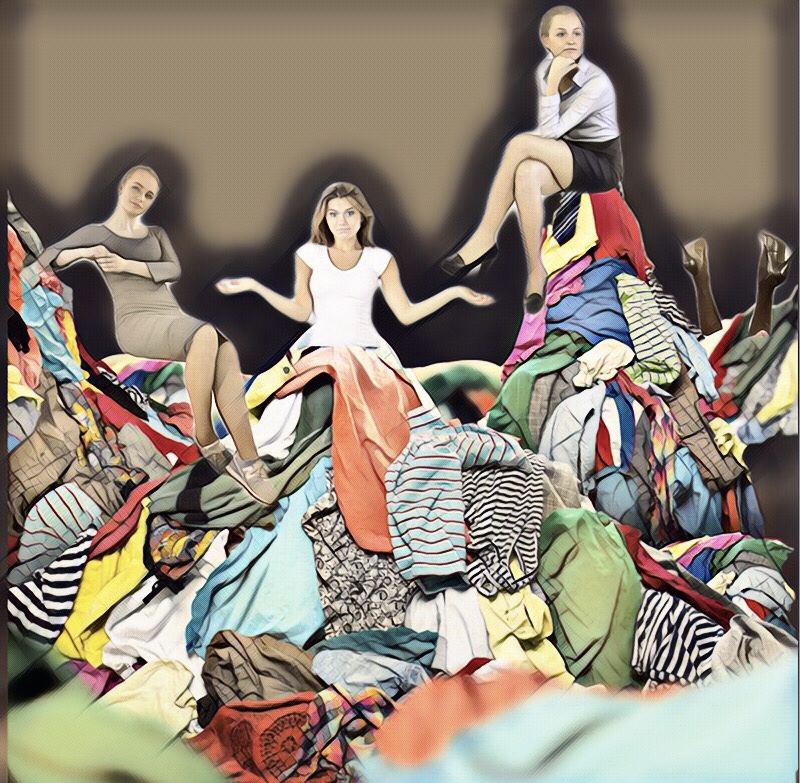The harsh realities of fast fashion continue to be exposed. More and more recently, people are considering the industry’s poor working conditions, its generation of pollutants, and the waste it produces. This creates a platform for sustainable companies to shed light on practices that are more ecologically and ethically sound.
Fashion designers are developing new methods for reusing wasted textiles, drawing attention towards the sustainability movement. At The New School, students are being educated on the benefits of a sustainable lifestyle thanks to the breadth of sustainability courses offered.
Timo Rissanen, a fashion designer and Associate Professor of Fashion Design and Sustainability at Parsons, creates zero waste designs as well as incorporating the idea of zero waste into his lectures at Parsons. In his book with Holly McQuillan, “Zero Waste Fashion Design,” the designers highlight creating designs without any wasted material.
Rissanen explained that fashion works in a “dominant economic system” that favors economic growth over sustainable practices. Sustainable efforts to improve the fashion industry such as fair wages, eliminating toxic chemicals and transitioning to regenerative and carbon farming aren’t able to match the growth of our economic system. As a response to the lack of change and avoidance of a better future in fashion, Rissanen and his colleagues formed the Union of Concerned Researchers in Fashion, which strives to bring more awareness to sustainable fashion and expose both environmental and ethical issues in the industry.
Rissanen hopes to see the fashion industry transform into one that avoids a “monoculture” of Westernized fashion that is globally sold. Instead, he wants to see a “multitude of small fashion industries that exist within planetary boundaries while creating flourishing for all,” while dispersing wealth fairly.
Ziqi Xing, a fourth-year fashion student at Parsons, recognizes the importance of sustainability as the base of all her designs.
“As a fashion student, I consider the idea of sustainability as a big part of my designs,” she said, “While my designs may not only be about doing sustainable fashion, the idea of sustainability is always involved in multiple ways.”
Xing went on to describe ways in which a designer can draw attention to the importance of renewable resources. She suggests one way to “arouse people’s attention about the issue” is by using recycled/deadstock fabric or material and/or redesigning second-hand garments into something new. Xing’s pieces have been featured in The Sustainable Thinking exhibition at the Museo Salvatore Ferragamo at the Palazzo Spini Feroni in Florence, Italy.
Xing specifically used fabric donated by Salvatore Ferragamo and leftover fabric from previous projects then combined them into a dress that showcases the beauty in recycling. “Each stripe represents the leftover material from a fashion project which indicates the waste we create in our fashion industry,” Xing said. Xing gives unwanted fabric new life, creating something impactful and intricate in the process.
The Salvatore Ferragamo exhibition showcases the designers’ work and research on recycled materials and features sustainable design creations, partnering with several up and coming designers. The showcase offers insights on the theme of sustainability and sheds light on the techniques of innovative designers in the field.
Zorina Wong, a third-year fashion student at Parsons, speaks on her experience as a fashion designer during this time of increased focus on sustainability.
“Humans and nature do not share a symbiotic relationship. We have to protect the planet to ensure our own survival,” Wong said, “Sustainability is the only way to go.”
Wong practices sustainability in her designs by using post-industrial fabric waste for her projects.
In response to fast fashion companies’ claims to go green, Wong says she is disgusted. “They are giving a false impression for customers while they are one of the biggest contributors to pollution in the fashion industry.”
She hopes to see textile technology evolve and contribute to developing a more sustainable way of textile making.
Kara Saun, a Creative Consultant, and designer was runner up on Project Runway’s first season centers her work around sustainability, “Eco couture also promotes economic and educational growth and celebrates artisan skills,” she said.
Saun, a costume consultant and designer for Disney’s Descendants, reveals that most of the background actors, and even the main cast, wore recycled and upcycled costumes made entirely from thrifted items.
When asked about the challenges of turning the fashion industry into a more sustainable one, Saun shares that she isn’t concerned about converting the industry. Instead, she’s interested in how to “excite” fashion enthusiasts about sustainability. “Being involved in sustainable fashion means becoming artisans, learning craft and tapping into your talents and creativity. It’s becoming part of a community,” Saun said.
“The Fashion Industry, like most things in life, will change when it is forced to,” Saun said, “We must, as customers, stand for the environment and a better way of doing things.” She believes that sustainability is more than a trend, “The Sustainability Movement is strong and thriving.”







